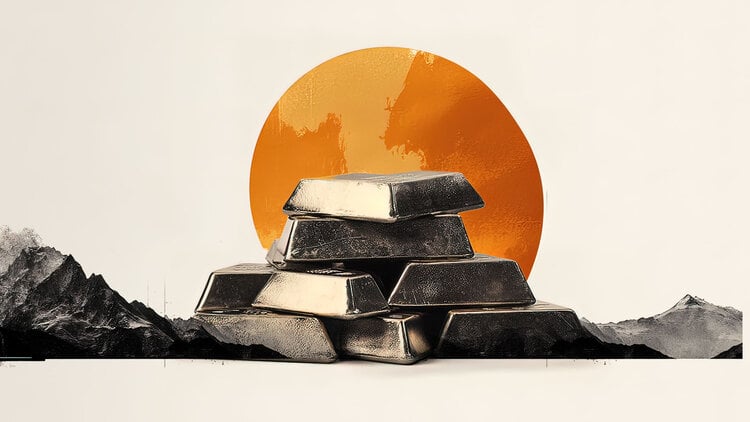Gold prices rose in Pakistan on Tuesday, according to data compiled by FXStreet.
The price for Gold stood at 28,317.96 Pakistani Rupees (PKR) per gram, up compared with the PKR 28,130.14 it cost on Monday.
The price for Gold increased to PKR 330,295.20 per tola from PKR 328,104.50 per tola a day earlier.
| Unit measure | Gold Price in PKR |
|---|---|
| 1 Gram | 28,317.96 |
| 10 Grams | 283,179.70 |
| Tola | 330,295.20 |
| Troy Ounce | 880,783.60 |
Daily Digest Market Movers: Gold price continues to attract safe-haven flows amid rising trade tensions
-
The US President dashed hopes the levies would be limited to a smaller group of countries with the biggest trade imbalances and said on Sunday that reciprocal tariffs would essentially include all nations. This comes on top of Trump’s 25% tariff on steel and aluminum, and auto imports, stoking worries about a widening global trade war.
-
Furthermore, investors now seem convinced that a tariff-driven slowdown in the US economic activity would force the Federal Reserve (Fed) to resume its rate-cutting cycle soon, despite sticky inflation. This, in turn, assists the safe-haven Gold price to register its strongest quarter since 1986 and hit a fresh record high on Tuesday.
-
The markets are currently pricing in the possibility that the US central bank will lower borrowing costs by 80 basis points by the end of this year. This keeps the US Treasury bond yields depressed, which, in turn, does little to help the US Dollar attract any meaningful buyers and further underpins the non-yielding yellow metal.
-
On the geopolitical front, Ukrainian officials said early on Monday that Russia bombed the city of Kharkiv in north-eastern Ukraine for the second night in a row. Moreover, Ukraine’s President, Volodymyr Zelenskyy said that Russia had fired more than 1,000 drones in the past week and called for a response from the US and other allies.
-
Israel earlier this month ended its ceasefire with the Hamas militant group and renewed its air and ground strikes. Adding to this, the Israeli military has issued mass evacuation orders for Rafah, signaling a possible new ground operation in the city, raising the risk of a further escalation of tensions in the region.
-
Traders now look to this week’s key US macro releases, scheduled at the beginning of a new month, starting with the JOLTS openings and ISM Manufacturing PMI on Tuesday. This will be followed by the ADP report on Wednesday, US ISM Services PMI on Thursday, and the closely-watched US Nonfarm Payrolls (NFP) on Friday.
-
The focus, however, will remain glued to Trump’s impending reciprocal tariffs announcement later today, at 19:00 GMT. This will play a key role in influencing the broader risk sentiment and the USD price dynamics, which, in turn, should provide some meaningful impetus to the XAU/USD pair.
FXStreet calculates Gold prices in Pakistan by adapting international prices (USD/PKR) to the local currency and measurement units. Prices are updated daily based on the market rates taken at the time of publication. Prices are just for reference and local rates could diverge slightly.
Gold FAQs
Gold has played a key role in human’s history as it has been widely used as a store of value and medium of exchange. Currently, apart from its shine and usage for jewelry, the precious metal is widely seen as a safe-haven asset, meaning that it is considered a good investment during turbulent times. Gold is also widely seen as a hedge against inflation and against depreciating currencies as it doesn’t rely on any specific issuer or government.
Central banks are the biggest Gold holders. In their aim to support their currencies in turbulent times, central banks tend to diversify their reserves and buy Gold to improve the perceived strength of the economy and the currency. High Gold reserves can be a source of trust for a country’s solvency. Central banks added 1,136 tonnes of Gold worth around $70 billion to their reserves in 2022, according to data from the World Gold Council. This is the highest yearly purchase since records began. Central banks from emerging economies such as China, India and Turkey are quickly increasing their Gold reserves.
Gold has an inverse correlation with the US Dollar and US Treasuries, which are both major reserve and safe-haven assets. When the Dollar depreciates, Gold tends to rise, enabling investors and central banks to diversify their assets in turbulent times. Gold is also inversely correlated with risk assets. A rally in the stock market tends to weaken Gold price, while sell-offs in riskier markets tend to favor the precious metal.
The price can move due to a wide range of factors. Geopolitical instability or fears of a deep recession can quickly make Gold price escalate due to its safe-haven status. As a yield-less asset, Gold tends to rise with lower interest rates, while higher cost of money usually weighs down on the yellow metal. Still, most moves depend on how the US Dollar (USD) behaves as the asset is priced in dollars (XAU/USD). A strong Dollar tends to keep the price of Gold controlled, whereas a weaker Dollar is likely to push Gold prices up.
(An automation tool was used in creating this post.)

